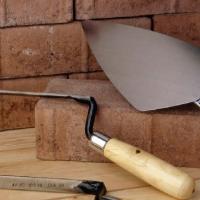Ceiling made of plastic panels: installation. Wall decoration - accurate calculation and installation of PVC panels How to calculate the area of one pvc panel
V modern interiors For apartments and offices, the design of suspended ceilings made of polyvinyl chloride (PVC) panels is common. It is comfortable and safe material, allowing you to quickly and inexpensively update any room. Nice appearance, easy maintenance, moisture resistance makes the plastic finish beneficial for the installation of walls and ceilings in bathrooms, lavatories and kitchens. The design and coating of plastic differs in texture and color palette, so you can easily select the necessary panels and decorate your home with them.
Features of PVC products
Plastic finishing - an economical option for a makeover appearance walls, ceilings and the whole room. Installation of finishing does not require construction skills; any person with accuracy and patience can cope with it.
A wide range of PVC finishes allows you to choose according to your taste suitable options for an organic combination with the interior of the room. PVC panels are:
- for ceiling structures that are lightweight, elastic, but fragile, requiring careful handling;
- for walls with greater rigidity and weight;
- glossy with varnish;
- with a picture on a thermal film;
- with a texture imitating wood, granite, etc.
Finishing products are available in several sizes, which must also be taken into account when purchasing material for repairs. The main advantage of PVC panels is that they are easy to clean as they are not afraid of moisture. In addition to bathrooms and toilets, balconies, loggias, courtyard gazebos and baths are trimmed with PVC plates. Some items are made with beautiful design and texture, such elements are able to decorate the interior.
Distinguish between polyvinyl chloride finish according to the technology of manufacturing and drawing. White panels without any pattern are simple and inexpensive. But there are also products with a decorative coating applied in two ways:
- economical - transfer of an ornament or pattern from a thermal film to the surface;
- by direct printing, this method allows you to obtain high-resolution images or decor with a large color palette. Requires special equipment.
The advantages of suspended structures
There are many advantages to suspended structures made of polyvinyl chloride material:
- First of all, it is the service life. Manufacturers guarantee from 15 years. But experience and calculations show that this period is much longer. A quality product does not lose its properties for 20 years.
- Safe and environmentally friendly. Polyvinyl chloride is used even for children's toys, therefore it is considered harmless.
- Low cost. Compared to other designs finishing material is inexpensive, but looks presentable.
- Moisture resistance. Dampness does not threaten plastic, and the structure tolerates leaks well.
When purchasing material, you should know how many fasteners are required and metal structures... Below are some recommendations for calculating the required number of panels and related materials.

Finishing selection
When preparing to purchase plastic panels you should carefully approach the choice. The quality of the products is different; curved elements will not decorate the interior.
We begin the choice with a careful examination: the geometry of the products is correct and the same, the pattern is evenly distributed over the plane, without scuffs and bald patches.
Opt for panels that are smooth, free from scratches, bumps and dents. If the stiffeners are visible from the front, this is considered a disadvantage. The number of stiffeners and their thickness give the strength of the plastic plate. The quality of the finish is influenced by the rigidity of the PVC structure. When choosing, pay attention to the wall thickness. The front must have strength and great thickness.
Check the connection, the connection should be easy and without gaps.
How to calculate the required number?
A simple way to calculate is to divide the ceiling area by the area of one piece, we get the required amount consumable... Experienced artisans recommend adding 20% for trim, trim, and cull. Since there are no windows on the floors, this is the most common method. For complex combined structures that combine various materials(drywall and plastic panels or stretch fabric with plates) the calculation is carried out for areas covered with PVC.

In cases where it is planned suspended ceiling, calculate the required number of mounting profiles and fasteners. For this purpose, it is better to schematically depict the floor and the location of the slabs on it. Having drawn parallel lines on the wall, we outline the installation locations of the profiles. The step is chosen depending on the width of the panels - 500-600 mm. In addition, it is required to provide for the installation of a rigid UD profile along the perimeter. Observing the scale according to the scheme, calculate the need for a metal profile.

To calculate the required fasteners for PVC installations products, consider fixing the bearing profiles to the ceiling, consumption - one dowel per 0.5 meter of profiles. The panels can be fixed to the profiles with special screws (self-tapping screws) with a wide head, the consumption is one per 0.5 meter of the plate length.
If skirting boards are to be installed, calculate the required length before purchasing. Standard sizes produced skirting boards - three meters. Therefore, having measured and calculated the perimeter of the ceiling, divide by three and round up.
If you are doing an economical repair option, then attach the products to the ceiling ceiling. Then, when calculating, you will find out the required amount of materials, limiting yourself to the first stage.

The construction market is constantly evolving, offering the consumer inexpensive and high-quality products, so repairs can be done easily and with pleasure. Modern building materials make it possible to produce Finishing work do it yourself quickly and without the involvement of professionals. Such materials include plastic panels, which are often used for ceiling decoration in residential and office premises.
Plastic panels are some of the cheapest options for decorating a bathroom.
The ceiling made of plastic panels is metal or wooden frame, sheathed with PVC clapboard. Plastic can be of various sizes, the greatest demand is for products with a length of 2.7 and 3 m and a width of 25 and 50 cm. Inside, such panels have stiffening ribs and a hollow base, so they are light and durable. For ease of installation on the sidewalls, they have docking locks. How to sew with your own hands?
Plastic ceiling panels are different from similar products used for wall cladding. They are much lighter as they only have to support their own weight. Wall panels are more durable, while ceiling panels can be damaged even by hand. Therefore, all work should be done with the utmost care.
Advantages and disadvantages

Ceiling decoration with plastic panels has its positive aspects:
- In the frame of the structure, you can hide electrical wiring, ventilation and other communications.
- Installation of recessed lights and lighting is not difficult. They are resistant to high temperatures and do not emit unpleasant odors. Therefore, the usual electrical wiring can be replaced with circuits for installing LEDs, halogen and spotlights.
- Simple assembly and disassembly process.
- Possibility of installing additional insulation from noise, moisture, sound into the frame.
- Wall panels are strong, durable, plastic, moisture and fire resistant, do not fade in the sun, and are easy to clean.
- When finishing, you can ignore the uneven surface.
The ceiling made of plastic panels also has its negative sides:
- Cheap plastic can let light through from downlights.
- The seams between the panels are visible to the naked eye.
- There is no possibility of making a multi-level structure or bending.
- Part of the room height is lost.

The frame for installing the panels must be metal, as the tree quickly rots and collapses.
Back to the table of contents
Types of PVC profiles
You will need not only the panels themselves, but also the accessories. When visiting the construction market for the first time, an inexperienced buyer may get confused due to the variety of PVC profiles. But each species has its own special purpose.

- Start profiles are the most commonly used. They are needed for fixing the panel around the perimeter of the room on the line of the mounted ceiling.
- Outside and inside plastic corners are needed to make nice seams at the corners of the room.
- H-profiles connect the ends of several panels.
- A plastic skirting board is needed to hide the ends of the panels. This is the same starter profile, only with a decorative finish.
- F-profiles are required to hide the ends. They can be useful when decorating adjacent walls with various materials.
Universal plastic corners hide any joints.
Back to the table of contents
Calculation of materials
Ceiling cladding is best done with materials typical sizes 5-10 mm thick, 250-500 mm wide. Typically, panels are supplied in standard lengths of 2.7-3 m, but there are also 4-meter samples.
The area of each panel can be seen on the packaging. Their required number will be equal to the area of the ceiling divided by the area of one panel. When calculating the required volume of materials, be sure to add a margin of 15%, which will be used for trimming and scrap. So, 10 PVC plates are needed for the ceiling, adding a stock, we get 11.5 panels (it is advisable to round up).
To calculate the amount of profile required, the ceiling area must be divided into strips spaced 60 cm apart: along them, mounting rails will be installed. Additionally, you will need a rigid profile for perimeter sheathing. If desired, metal profiles can be replaced with a wooden crate, but the useful life of such a structure will be much shorter.
Ceiling skirting boards are sold in 3 meter segments. To calculate the required amount, you need to divide the perimeter length by 3, round the resulting number up.
Back to the table of contents
Ceiling installation
Before starting work, the walls and ceiling must be checked for hidden wiring. To do this, you can use a special detector or invite a professional.
Under no circumstances should the plastic panel be glued directly onto the concrete - the lack of ventilation between the panel and the ceiling is unacceptable.
In order to prevent the occurrence bad smell in a room associated with the appearance of fungus or mold, the surface of the ceiling should be treated with an antiseptic solution. Then you need to decide on the height of the false ceiling. In this case, it is necessary to take into account the dimensions of the lighting devices, which will be installed directly in the panel. Usually suspended ceiling made of plastic, it is installed at a distance of 6-7 cm from the rough surface.

At the level of the drawn line with self-tapping screws, it is necessary to fix special corners under the base of the ceiling. After fixing the corners along the perimeter of the line, guides are installed on them. They need to be fixed directly to the rough ceiling using long self-tapping screws, and the self-tapping screw must be driven in so that its head is at the level of the line on the walls and guide corners. The guides are attached in 60-100 cm increments.
After that, you need to prepare the plastic panels. Using a hacksaw for metal, they need to set right size... The slab should be cut about 5 mm less than the length of the room. To obtain a perfectly flat edge, it must be sanded with sandpaper. After that, the protective film is removed from the panels. Care must be taken not to crush the panel.
In advance certain places holes are made for lighting fixtures. They can be done either with an ordinary sharp knife or with a special drill attachment.
You need to take care of the supply of electrical wires to the ceiling in advance. After the lighting fixtures are inserted into the grooves prepared for them, the installation of the panels can begin. They must be fastened across the profiles. The first panel slides close to the wall in order to be in the profile on three sides. The last 4th side is attached to the frame with self-tapping screws. The following panels must be fixed in the same way, but one side is fixed to the previous panel.
This is how you need to fix all panels except the last one. Before attaching it, it is necessary to level the ceiling using the guides by twisting or loosening the self-tapping screws. The level of the ceiling should be the same everywhere.
Next you need to give last panel required width and insert it into the grooves.
Before finishing plastic panels necessary calculate the amount various profiles, fasteners, PVC panels and rails for lathing... This article provides a technique that will help you determine the approximate amount of material for installation PVC panels.
Calculation of the number of rais for the crate:
To calculate the number of rai, you need to measure the total wall length and ceiling height in meters. Then divide the height of the ceilings by distance between panels(no more than 0.5 m), round the resulting number to a larger one and multiply by the total length of the walls. After that, similarly calculate the footage of the slats for window and doorways, and subtract from the resulting number.
At calculation it is necessary to take into account that the lathing is done along the perimeter of the walls. Therefore, to the total length of the slats, you need to add two more vertical slats for each wall, the length of which is ceiling heights... To the resulting number, you also need to add the perimeter of window and door openings.
After all calculations to the length of the yards, it is necessary to add 5% for overlaps and cuts and round the result up to a whole number.
For convenience, below is formula for calculating the number of battens:
![]()
where L ray - length of rais, m; l - the total length of the room, m; h - ceiling height, m; a - distance between panels, taken from 0.2 to 0.5 m; L pr - the length of the rail in the window and door openings, m; P - the perimeter of window and door openings, m; k - a safety factor of 5% (taken as 1.05).
Calculation of the number of plastic panels:
For calculation of PVC panels need to calculate wall area and subtract from it window area and doors... The resulting number is divided by the area of the panel. It is recommended to add 10% to the resulting figure for overlaps and cuts and round the resulting number to a larger integer.
Below is:

where N - number of panels, PC; l - the total length of the room, m; h - ceiling height, m; S pr - area of window and door openings, m 2; l pan - panel length, m; h pan - panel height, m; k - the safety factor is 10% (1.1 is accepted).
Same way number of panels can be found by dividing total wall length on the panel width... In this case number of panels for finishing surfaces above the door, as well as above and below the windows, they are calculated separately.
Calculation of mounting profiles for plastic panels:
Mounting profiles are sold individually, the length of one piece is usually 3 m.
If the installation is in progress inner and outer corners, then it is necessary to measure separately the height of all external and internal corners into the room, divide the resulting dimensions by 3 m. For framing window and door openings - the sum of the perimeters of windows and doors divided by 3 m (windows are measured on four sides, doorways on three sides, except for the bottom width), add the resulting number to the length of the outer corners. Round off the values of the numbers to a larger integer, the result will be the required number of corners in pieces.
If the installation is in progress universal angle , which is sold by the meters, then you need to add everything indoor and outdoor catch lengths, as well as the perimeters of window and door openings, to obtain the required length of the corner.
Calculation required number fillets... The perimeter of the ceiling is measured, the resulting number is divided by 3 and rounded up to a larger integer. You may also need inner and outer corners for ceiling plinth, number which will equal number of inner and outer corners indoors, respectively.
Start profile. Quantity depends on joints with walls made of other materials. From the starting profile, you need to start the installation of panels on each of the walls, so for calculation you will need the height of the corners from which the installation of the panels will begin, the resulting number must be divided by 3 m and rounded to a whole larger.
Redecoration in an apartment, with the modern variety of plastic panels, is, at first glance, a fairly simple task. However, there are many nuances in this matter, the neglect of which will certainly lead to a senseless loss of money and time.
Most often, mistakes are made even at the planning stage, when it is necessary to calculate the number of PVC panels. All other troubles are already overtaking installation works... To avoid all this, to make high-quality, and, importantly, inexpensive repairs, it is recommended to take a closer look at the information below.
Benefits of PVC panels
To begin with, it is worth recalling the main advantages of finishing with plastic panels. It is the following advantages that make this type of repair very popular, and the material itself is well-sold:
- attractive cost;
- a huge selection of colors and textures of plastic;
- easy and quick installation;
- versatility of application;
- resistance to moisture and vapors;
- ease of care;
- durability;
- quick dismantling if necessary.
Installation of plastic panels in a medium-sized room can be done in just one day, which cannot be said about ceramic tiles or decorative plaster... Even painting and drying will take longer than finishing with plastic.

A few words about the frame
The lathing for plastic panels can be made either from a metal profile or from wooden beams... Each of these materials has advantages and disadvantages. It is worth listing them briefly.
The advantages of a metal frame:
- mounts on almost any surface, regardless of its curvature;
- steadily tolerates sudden changes in temperature and humidity levels;
- durability;
- does not burn;
- the metal frame can be tweaked even when it is already assembled.
Disadvantages of a metal frame:
- the relative high cost of profiles;
- greater than that of a tree, weight.
Advantages of wooden lathing:
- cheapness;
- ease.
Disadvantages of wooden lathing:
- can only be mounted on a relatively flat surface;
- does not tolerate changes in temperature and humidity levels;
- flammable;
- short service life.
Which one to choose depends, first of all, not on the price, but on the conditions in which it will serve as the basis for the plastic finish. If it is perfectly dry and warm room with constant climate control and smooth walls, the wooden frame will be the right choice... In other cases, only metal.
Calculation of PVC panels
What to start from when buying plastic for wall decoration? Three parameters are taken into account here:
- the perimeter of the room;
- ceiling height;
- width of one panel.
Example # 1
The dimensions of the room are 5x6 meters and the desired ceiling height is 2.5 meters. Plastic panels for the walls will be purchased standard: 25 centimeters wide and 3 meters long. The corner joints will be connected using a herringbone (plastic corner). To make the correct calculation of PVC panels in this particular example, it is necessary to divide the perimeter of the room by the width of the plastic. The corner is calculated according to the height and the number of corners.
The perimeter is: 5 x 6 = 30 meters.
Required number of panels: 30 / 0.25 = 120 pieces.
Connecting angle: 2.5 x 4 = 10 linear meters.
Example No. 2
Now the task is getting more complicated. Let's say the dimensions of the room are 10x12 meters and the ceiling height is 3.5 meters. The width of one plastic panel is 30 centimeters and the length is 3 meters. Such parameters are inherent in public spaces. For this example, in addition to the above materials, you will also need a connecting H-shaped plastic profile. Now the calculation.
The perimeter is: 10 x 12 = 120 meters.
Required number of panels: for the first row 120 / 0.3 = 400 pieces. Plus, to build another 0.5 meter in height, 400 plates of the corresponding length will be needed, which will amount to 200 running meters of panels, or 200/3 ~ 67 pieces. In total, for the entire room, we have 467 panels.
The plastic corner profile is calculated by analogy with the previous example, i.e. 3.5 x 4 = 14 running meters. The connecting profile is calculated based on the perimeter of the room, which in this case corresponds to 120 running meters.
For non-standard rooms, the calculation of plastic panels is carried out by analogy with the above examples.
Installation of plastic
After miscalculation and purchase of all necessary materials all that remains is the installation of PVC panels. Wall decoration usually begins when the ceiling is ready. It can be suspended, tensioned or plastic. A frame made of a metal profile is assembled on the walls. Further, - on the corner posts, using self-tapping screws with a wide head, the connecting profile is fixed. If the height of the room is non-standard (as in the second example), then at a distance of 3 meters from the floor, an H-shaped profile is mounted to the lathing for building.
PVC installation starts from any angle. The first panel is installed, aligned with a plumb line and fixed to the frame. The rest of the panels are recruited by analogy. The last corner sheet is cut to the width corresponding to the remaining gap. He is first tucked into the connecting corner, and then slides into the lock of the previous installed panel... The rest of the planes are sewn up by analogy with the above. With a non-standard height, the first row is first sewn up, then the build-up is carried out.
Wall decoration is a must and important stage in construction. It is necessary that the material is durable and practical. Pvc panels are perfect for these purposes. But, before installation, you need to know how to correctly calculate the number of pvc panels.
PVC types
Before moving on to the calculations, it is important to understand which panels will be used. The size and certain parameters of the material will depend on the type of product. PVC are ceiling and wall. For the former, more loyal strength requirements are applied, since they are not subject to large loads. The latter, however, are highly durable. In construction, one cannot be substituted for another, since each panel is made for a specific purpose.
Why do you need a mounting profile
The mounting profile is a versatile product. It allows you to speed up the installation process, as well as extend the operating life of the entire structure. It is very important to choose the right profile for a specific installation system. When choosing a profile, it is necessary to take into account its material, design, as well as the color of the product.
For example, when installing a plastic profile, temperature and weather conditions must be taken into account so that the material can withstand these atmospheric changes.
How to calculate PVC: the easy way
In order to calculate the number of panels on the walls and ceiling, you need to measure the perimeter of the room. From the result obtained, it is necessary to subtract the sum of the perimeters of windows and doors, and divide this result by the perimeter of a single element.
For installation on a ceiling, you only need to calculate the perimeter of the ceiling itself. It is recommended to take into account that pieces of material remain during work, the panels may be damaged during installation, therefore, it is better to take material for facing work with a margin. In places with high humidity use pvc plastic panels.
You also need to know how to calculate the number of pvc panels for a bathroom. Such a room has a small area, in which there are many different angles and bends. For this reason, a large number of material, since the panels often have to be cut to shape.
If for the installation of panels in living rooms the material consumption must be increased by approximately 10%, then for works in the bathroom by 15-20%.
Calculation of additional elements
Performed wooden slats, plastic or metal. The most popular are plastic slats. When installing pvc panels, the distance between the profiles must be taken into account, it should be no more than thirty centimeters. Given this information, it is necessary to calculate additional elements.
So, for example, slats are used not only around the entire perimeter of the wall, but also around windows and doors. They are installed to the base of the rail using self-tapping screws or screws with an indent of 40 cm. Therefore, first you need to calculate the initial perimeter, taking into account the perimeter of the doors and window openings. To this amount you need to add 10-15% for additional areas and trims of the material.
 An excerpt characterizing Maklakov, Nikolai Alekseevich
An excerpt characterizing Maklakov, Nikolai Alekseevich The sexiest lips: scientists have calculated the shape and volume of the girls' sponges
The sexiest lips: scientists have calculated the shape and volume of the girls' sponges Signs of oily skin dehydration
Signs of oily skin dehydration Conspiracies for wealth and good luck at home Ritual for financial well-being luck and luck
Conspiracies for wealth and good luck at home Ritual for financial well-being luck and luck Bricklayers - work tools
Bricklayers - work tools Enfilade layout. What is an enfilade. Is any row a suite
Enfilade layout. What is an enfilade. Is any row a suite How to start repairing an apartment with your own hands
How to start repairing an apartment with your own hands